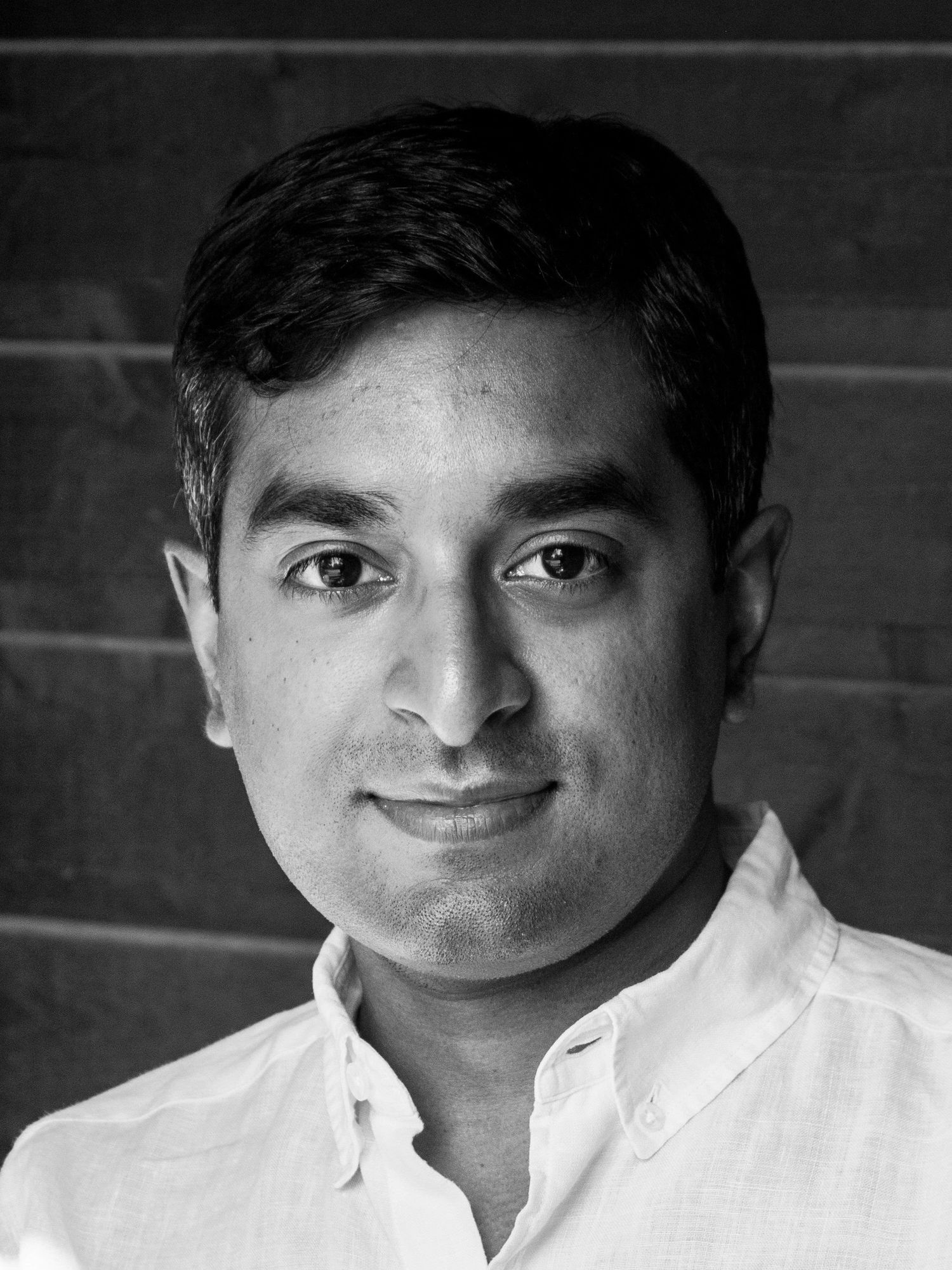
Episode 3: How the pandemic could change healthcare forever
For all the flaws of many healthcare systems around the world, we've seen unprecedented coordination among researchers, healthcare providers, manufacturers, and governments which led to the rapid development of effective COVID-19 vaccines. In this episode, we'll look at the lessons learned during the pandemic - from telemedicine to vaccine breakthroughs - and how they can continue to improve the healthcare industry in the coming years.
Transcript: Season 2 Episode 3: How the pandemic could change healthcare forever
Disclosure: The opinions expressed by Eurasia Group analysts in this podcast episode are their own, and may differ from those of Citigroup Inc and its affiliates.
Scott Rosenstein: There's really a very significant trust deficit right now between Americans and the institutions that are intended to help during normal times and emergencies. The lack of trust in these institutions, as well as the lack of access to healthcare, it means people don't engage with healthcare in a productive way.
Rob Jasminski: Hopefully we start seeing some pretty big containment on some of the very big areas, like the obesity, the diabetes trends, and then we can start redeploying some of that savings in those type of programs, into some of these other areas of unmet medical needs.
Caitlin Dean: Welcome to Living Beyond Borders, the podcast from Citi Private Bank and GZERO Media that examines the risks and opportunities in our rapidly changing world—from global politics to economics—and what it all means for you.
I’m Caitlin Dean, Head of the Geostrategy Practice at Eurasia Group.
It was springtime, and Americans were on high alert. A new and deadly strain of a virus – originating in Asia – began spreading around the world. It was a pathogen that humans had not yet been exposed to…and no one was immune.
The year…was 1957.
This flu pandemic was second only to the 1918 outbreak in terms of severity. Approximately 20 million Americans were infected, and more than 100 thousand died. Bu many more deaths were prevented by a vaccine – one created by Maurice Hilleman, who would go on to create vaccines for other common diseases like meningitis and measles.
Now nearly two years into the Covid pandemic, the world is a much different place than it was in the 1950s. Travel and globalization mean viruses can spread much faster. But innovation and technology are also vastly improved today.
We’re going to talk about the healthcare landscape, and the challenges and opportunities the industry and societies face as we emerge from Covid.
Joining me now are Rob Jasminski, Global Head of Citi Investment Management
And Scott Rosenstein, senior public health advisor at the Eurasia Group – thanks for being here.
Rob Jasminski: Thanks Caitlin.
Scott Rosenstein: Thanks for having me.
Caitlin Dean: Rob, let's start with you to get a lay of the land. The COVID-19 crisis is, of course, by no means over, but right now, what do you see as some of the biggest breakthroughs that we've seen during the pandemic in terms of how we approach health?
Rob Jasminski: Look, I think it's important to probably frame healthcare a little bit before COVID. You know, the US spends a little over 17% of GDP. I think the OACD average is a little around 9%. So if you think about aging populations, you think about kind of everything going on, we've had an extreme strain on the cost system. We're looking for solutions. So healthcare has been ripe really for looking for two areas, continued innovation, and clearly areas that take costs out of the overall system.
The first breakthrough, which is the mRNA vaccines, the scientists have been exploring vaccine usage with mRNAs for, I think, close to three decades, but they had some very big issues to overcome like avoiding the violent immune response from putting the mRNA into the system, and then really how to encapsulate it so our own body doesn't break it down. The other part is vaccines are notoriously long in development. I think the average time for vaccine development is about 10 years. And I think prior to COVID vaccines, four years was the quickest we saw a vaccine come from kind of clinic to man.
Rob Jasminski: So I think when you think about what we've delivered on mRNAs vaccines, I think was a pretty profound change. And I think we're going to build on this. So we talk about kind of the growth in biological medicine, this kind of new revolution. I think mRNA is going to form one of the bases. It's being used today in clinical trials in other infectious diseases like Zika, Ebola, but it's also being used, this is probably where one of the big opportunities could come through across the cancer spectrum.
Rob Jasminski: And then the other part is probably going to the other end of the spectrum here. It's actually telemedicine. I think when the world shut down, everything we've ended up doing for our work lives on Zoom. I think telemedicine filled a very big void. The market's very large. I think in 2020, it was just under $60 billion and it's expected to go to close to 300 billion by 2028. And it's truly global, China's over a $20 billion market opportunity.
And then if you think about it with other parts of technology, so I have my Apple Watch on, constantly it's saying, "Please stand up," or tracking through. So when you combine kind of, I think telemedicine with wearables, it's a really big drive to try to get us to this kind of proactive healthcare. It takes a lot of costs out of the system. And I think this hopefully will drive to better outcomes.
Caitlin Dean: For sure, thanks Rob. I think those both hit very close to home. I've had an mRNA vaccine and I've done a telemedicine visit in the past month. So yeah, those are both really significant.
Caitlin Dean: Scott, are there other trends or breakthroughs that you've seen?
Scott Rosenstein: I'd just like to add to the vaccine discussion a little bit just because I think it's quite important and it really is probably the most significant breakthrough that we've seen. The mRNA, it seems like an overnight sensation, but it's really the result of many decades of research. It's an incredible sort of example, it really underscores the general value of public-private partnership. You have a lot of basic research in the public sector at universities, and then you have the ability to take it to market in the private sector.
Scott Rosenstein:
But I think it's also important to remember that in the run-up to this pandemic, vaccines were really not considered an attractive business.
Vaccines typically take forever to develop. They're complicated to make. They aren't like drugs for chronic illnesses that you need to take constantly. And, as we've seen, if you're rolling them out during a pandemic, there's going to be enormous pressure for you to keep prices low.
So that's led to a lot of underinvestment in the vaccine industry for many decades. And this mRNA technology could be a really important breakthrough. It's quite possible that we do see a new flu vaccine on the heels of this mRNA or utilizing this mRNA technology that really does transform that industry as well. And then you have the ability to adapt and update these vaccines in the face of a new emergency. They can be reformulated quicker. They seem like they offer superior protection than the previous platforms. So it'll be really interesting to see how this plays out.
Scott Rosenstein: And I think the other area where I've seen a lot of activity, and I think there's a lot of promise really, is in data analysis that comes from increased data collection. It comes from increased artificial intelligence capabilities. I think a lot of people got very accustomed to, let's say the Johns Hopkins tracker, the Worldometer's Our World in Data. This is really, I think, an incredible moment for that kind of data synthesis that happens both sort of at the public level or for the average observer, but also for scientists that are really looking to synthesize information across a number of platforms, across a number of countries.
Caitlin Dean: Do you get the sense from business leaders and from government leaders across different countries that we'll be able to really cooperate and form the partnerships that we need to make use of these developments going forward?
Scott Rosenstein: So I don't want to be too pessimistic, but if you've spent any time in the pandemic preparedness world, the answer is a hard no, not at all. I think the last 20 years have really been defined by cycles of panic and then neglect. There's a burst of interest and investment in pandemic preparedness, followed by years of stagnance, the money dries up, attention shifts elsewhere. I think the big question is will this happen this time around? I think this time could be different, at least a little bit different due to the scale of the emergency, the scale of the challenge. There's a lot of innovation and incentive for creating new tools that can really be helpful for the next pandemic.
Also, there's a recognition that microbes, they don't respect borders, global surveillance and cooperation is both sorely necessary, but in incredible short supply right now. So without a doubt, we're going to see some very big multi-lateral investments intended to address these issues around surveillance and response and recovery. There's going to be calls for more investment in the WHO or other similar agencies. The philanthropic world is going to invest, startups are going to try and build off the model of the mRNA vaccines and try to really kind of capitalize on some of this research funding from the public sector. All of that's going to happen, I think we can say that with reasonable certainty, but how long will it last and how long will it happen for it? Very hard to say.
Caitlin Dean: Rob, another thing we learned from the pandemic is the importance of ongoing medical research and how important preventative and behavioral measures can be. In this case, of course, social distancing and mask wearing. So broadening that out to the wider healthcare system, tell us a bit about the shift from sick care, in quotes, to well care.
Rob Jasminski: I think that the shift to well care, it's interesting because I think where you are getting cooperation is employers are actually seeing, A, skyrocketing healthcare costs for their own employers and employees. They're also seeing impact of kind of absenteeism. And it kind of builds on those earlier trends of why US healthcare costs are so expensive. So if you think about it, we have the highest healthcare costs in the world. And yet you have this really active debate about our healthcare trends, outcomes, and are they actually better than the rest of the world? Clearly in socioeconomic sides, wide disparities of outcomes in treatment availabilities.
And I think part of it, and this is this debate around the shift from the sick care to the well care is, today something like 70% of all US deaths are caused by three main areas, cardiovascular disease, cancer, and diabetes. And if you think, the underlying foundation for a lot of the root cause for that, it's actually behavioral. And a lot of this really could benefit from that shift to prevention and a wider awareness. I think COVID may have, if anything, kind of lit a little bit of a fire for people to be kind of more self-aware.
And so I think when you have kind of an individual that's more self-aware and now employers and governments that are trying to drive some better solutions to make people kind of aware of what's available for them. So one area is really just focusing in on preventative services, things like smoking cessation, colorectal screening, 45 and above, breast cancer screening for women at 40 above, and immunizations, whether it's over 65 getting flu vaccinations, or it's really getting pediatric vaccinations across early childhood.
The CDC has some data out there that for every dollar spent on childhood immunizations, it saves $20 on the overall healthcare system. And I think that's what will drive through what we talked about earlier was this reduction in overall healthcare costs. And one of the areas I saw for statistic was, for medical costs falling by about three and a half dollars for every dollar spent on a wellness program for an employer. And so, I think it's think it's things like that that will drive through.
Caitlin Dean: So when we continue to make some of those shifts, what kind of financial impacts could they have on healthcare spending?
Rob Jasminski: So, it's interesting. So first, and hopefully most importantly, is that the 17% of GDP starts drifting lower, right? Because if you think of aging populations and the whole curve of how usage of healthcare kind of really starts going up from 55 to 60, and then kind of goes vertical, you kind of bankrupt many governments, if you can't find cost controls without having them ration drug use, or medical access. And so, I think one part is, this should be a pretty big cost containment and you start marrying this with kind of the technology side. Hopefully we start seeing some pretty big containment on some of the very big areas, like the obesity, the diabetes trends, and then we can start redeploying some of that savings in those type of programs, into some of these other areas of unmet medical needs.
So, for us, I think looking at a combination of this, the big focus is that we start seeing the cost curve start to shift, and instead of kind of spiking up at the same rate, it starts plateauing. I think that would be the biggest drivers that you start redeploying costs into the system into other areas, and you can flatten the curve so that we basically can offset kind of what is this aging demographic.
Caitlin Dean: Scott, Rob was talking about cooperation between employers and employees, but looking at the broader system, how much coordination is it going to take for private healthcare providers, public health organizations and governments to make this kind of shift happen in the US?
Scott Rosenstein: Well, I think it starts with a sometimes overlooked but important foundational component of all of this, and that's trust. There's really a very significant trust deficit right now between Americans and the institutions that are intended to help during normal times and emergencies. The lack of trust in these institutions, as well as the lack of access to healthcare, it means people don't engage with healthcare in a productive way. It means they reject vaccine messaging when they think that the government or big pharma is really just carrying out some sinister plan. These trust deficits, these don't get fixed during emergencies. They need to be in place before the emergency, and so that's really an area that needs to be invested in, and needs to be considered as sort of an after-action reckoning with what happened during this pandemic.
It's also, trust, I think in general, it's one of the best predictors of country success in this pandemic. The social cohesion trust in government combined, obviously with resources really was a very good predictor of a country's ability to put together a less politicized response, and a more cohesive, more coordinated response.
And one other really important investment that I want to talk about is local public health capacity, not to mention public health literacy. So having the resources on the ground at the community level that can really carry out some of this shoe leather, public health work, talking testing, tracing, working with community lever leaders to deliver nuanced messaging that needs to strike a, a balance between panic and complacency, it's a tone that's really difficult to find in our current age.
I think that pandemic really exposed numerous shortfalls in these areas, not just in the US, but I think there needs to be a reckoning moving forward. But the opportunity is there, we have these digital tools, we have this ability to interact with individuals. In order to have a really good coordinated response, that's where you need to start.
Caitlin Dean: Yeah, Scott, that's a really great point. And you had mentioned how countries with higher levels of trust were able to recover more quickly from the pandemic. In normal times, we know that other countries have more socialized medicine than we have in places like of Canada and in the European Union, are they in better shape, overall long term in terms of cost and outcomes, and how much of that is because of the system, and how much of that is because of trust?
Scott Rosenstein: Yeah. So I think certainly we've seen the benefits of centralized health systems when we're talking about the rollout of, let's say national vaccination campaigns. They're done with much less confusion, much less administrative burden, much more efficient. We've also seen it in terms of data analysis, which I've talked about. We have, I think the UK and Israel are really contributing to our real world understanding of vaccine efficacy in a way that's pretty significant. It's facilitated by their national healthcare systems. The US, which is really typically the gold standard on a lot of this epidemiological analysis, the US has been playing catch up for the entire pandemic. The US still does a lot of important advantages on the innovation side, also on the data analysis side, the FDA and the CDC are essentially the gold standard on a lot of these big questions, but there are a lot of challenges around the quality of the data, and around the system that feeds that data and allows them to make that analysis.
But then also, in the public sector, I think the NIH in the US remains a really important driving force in basic research. The private sector, still seeing a lot of innovation happen there, and hopefully some combination of these types of efforts can help address these healthcare issues, not only during emergencies, and also address some of the trust issues. Thining about being able to communicate what an incredible, powerful tool vaccines are, what an incredible powerful tool vaccination is, more generally. I think, in the beginning of the pandemic or when we were developing these vaccines, there was some optimism that this could be really a turning point for vaccines around the world, but also in particularly vaccine hesitant communities, because it really does demonstrate their value in a real world setting that maybe isn't demonstrated during normal times, because in the US, many of these diseases have been close to eliminated or very low level, so a lot of people don't see them in their lives.
And I think the reality is, it's a mixed bag.
it comes down to addressing some of these challenges before the emergency, in order to be able to really respond effectively during the emergency.
And then the other one, which I think was really kind of revealed during the pandemic are these underlying conditions, and our ability as a society to address these issues like hypertension, diabetes, other co-morbidities, address these issues from a public health perspective, make it not necessarily a sick care response where you're only responding to symptoms, but think about some of the behavioral issues, think about some of the things that transcend healthcare, that bring down your indicators on obesity, on diabetes. Think about ways in which we can take a more holistic approach that thinks about behavior, thinks about lifestyle, diet, preventive medicine. Investments in those areas, I think are really important in order for us to get out in front of the cost issue, but also the trust issue, and to create sort of a better starting point, if and when there is another health emergency.
Caitlin Dean: Rob, you had brought up the fact that both employers and employees can save money by making some behavioral changes, and moving more toward well care. But Scott brought a up some of the more expensive sides of healthcare, especially breakthrough technologies. And companies also often have incentives to develop expensive breakthrough medicines and treatments, so what kind of financial incentives will companies need to put more emphasis on well care instead of sick care?
Rob Jasminski: You know, Caitlin, great question, and this builds on something Scott said, which was that trust factor. So if you think about it today, we have in the US, a pretty big disconnect between the prescriber, the payer and the patient. The patient wants, "The best solution," the payer wants to limit costs, and the prescriber you would say is following the best, evidence based medicine, but sometimes they don't always kind of connect here. And so I think, in one aspect, it's a balancing act to the point here on the breakthrough medicines of, what is driving the overall cost. And I look at it as when Gilead really focused on the hepatitis market, and it was an expensive drug, but if you looked at the overall cost to the healthcare system for patients that then were hospitalized for an extended period of time, the longer term issues on the liver side, you could do a cost benefit analysis and say, "Look, the front cost of the drug outweighed the overall cost if you didn't have the drug in you in the system. So there was a net benefit for the overall system. It clearly still became very politicized in the standpoint that many state's Medicaid budgets kind of blew up because they had one drug that became a really big line item. So even that created its own set of difficulties. I think if you look around the world, and we've mentioned some of these other countries like Canada, the UK, even in a socialized aspect, there's a big focus on the cost trade off. And some of these become very personal decisions. And so if you see this in the cancer space today, there's no cure for many of these types of cancers. We end up getting on this quality of life debate, which is an expensive drug for maybe two more months of life expectancy.
And so then the trade off comes off of what's that benefit and who makes the decision? And so I do think there will be some tough decisions on some of these breakthrough medicines, but I also think as that trust factor starts hopefully improving and if we start talking about wellness, what you end up doing is maybe start taking costs out of certain areas of the system by changing behavior.
There's going to be a lot more, probably rigid sets of standards here of what is the actual benefit? What is the cost of that benefit? And you can compare it in the overall aspect of, if the medicine wasn't available, is there something that is equally good that may be less expensive? Are there opportunities set? So I think you will see a bit more of the tiering.
Caitlin Dean: Rob, so sticking on the financial side a bit, but moving from costs to investment, where are some of the spaces where you think healthcare investment is most necessary and where it's most attractive?
Rob Jasminski: So I think that's a really interesting area. So one of my colleagues was quoting the century of biology. And so it seems like just the other day, but it was over 20 years ago, that I was a healthcare analyst. And I remember back in the early 90s, everything was around innovation. And then it seemed that the industry had a lot of mergers, acquisitions, people kind of got long on some very old drugs and things kind of went quiet for a while. I think we're in this area, and we saw it with the mRNA technology, but I think there's a new awareness. And I think the other part, there's a little bit of what's called a global healthcare arms race. China was nowhere 10 years ago and they've been trying to innovate very aggressively.
I think Europe realizes that a lot of their big companies kind of migrated outside of their borders, and there's some interesting new, smaller biotech companies there. And I think Europe's trying to sponsor some of their own growth there. And clearly the U.S. stands out as the bellwether. So one area is clearly going to be around the biotech and the focus on new innovation.
The other part is there's been massive breakthroughs in places like gene editing. the ability today to do gene correction, gene modifications, activating or silencing certain genes, whole new areas that didn't have treatments, things like sickle cell disease, various cancer types, this could be a transformational area on these areas today that there's really no promising treatments.
And then I think there's going to be two areas around the technology side. So one is clearly technology based drug discovery. And so I remember back when the human genome project was going through and we've watched how quickly that mapping cost came down, and so now you can sequence genomes for under $1000. And then adding on technologies, like machine learning, blending in AI calculations. And then clearly with everything we've seen on hardware and software capabilities, the ability to really bring new therapeutic areas and targeting into the clinic much faster, I think is going to be a profound change.
So if you think about the old analogy, more shots on goals should hopefully lead to goals, the ability now to really bring in these new targeted areas to hopefully cut down in that initial screening and lead time and get it into the clinic, and then hopefully in demand faster. And then I'll just tie out, which is kind of, if you think about our interactions of going to a hospital and where there could be abilities, because clearly one part about many aspects of having a surgery or being in the hospital is it's actually what you pick up after the procedure in the hospital that leads to a lot of the complications. Hospitals are unfortunately highly infectious. And so the fastest ability to recover and get you out of a hospital actually leads to substantial outcomes. So if you think about some of the trends of the future hospital and our interaction, it's probably not too far away where we start interacting much more with an AI program or a robot, and we've already seen tremendous breakthroughs in robotic surgery, cuts down on infections, smaller, minimal incisions, gets people out of the hospitals faster, better outcomes.
If you start adding on now what we're doing with 5g and broadband speeds, it's not too far away where you have telesurgery. The ability to really bring in much more world class facility by having a surgeon based in London or based in New York doing a procedure with a robot located in that local market.
Caitlin Dean: Yeah. Some of those seem just so amazing and so incredible. Bringing it down to a sort of more personal level, what should individual investors keep in mind?
Rob Jasminski: Healthcare is big and diverse. And so I think two parts. I think one aspect is I really do see COVID as a wake up call. I think we would all be amiss if we think what we just had with COVID is an isolated event. More diseases as we saw global trade, global travel. And so I think there's kind of been a bit of call that the investment in healthcare is essential. We've seen some improvements. But I think from the standpoint there is one aspect is healthcare costs are going up and we need to try to find innovation.
And with all the changes that we've seen on technology, transformational aspects, I really do see kind of a revolutionary kind of new decade coming out on some of these areas. And then the other aspect is really trying to make sure healthcare is distributed equitably. We saw clearly in kind of the COVID world, once again, a very big inequality gap on certain rural areas, certain regions.
If the U.S. has 90 plus percent vaccination rates, and yet some of the emerging market have zero vaccination rates, the next Delta strain is still coming into the U.S. So we have to think globally on top of that. So I think those two areas there are going to be essential for meeting our next set of challenges across the healthcare landscape.
Caitlin Dean: So Scott, from a geopolitical perspective, what do you see as the lessons of this pandemic? How much have we learned about the way countries behave during health emergencies and the ways that they work together or don't?
Scott Rosenstein: I think there was an overwhelming expectation in the pandemic preparedness community that an emergency of this scale would generate a strong nationalistic response, an every nation for themselves response. That happened. In that sense, a lot of what we've seen wasn't surprising, the hoarding of the vaccines, the countries with manufacturing capacity getting first access, the highly politicized nature of travel restrictions, frequently with very little epidemiological justification, and the donation of supplies to achieve diplomatic objectives, sometimes referred to as vaccine diplomacy. All of that wasn't surprising.
It's just that the expectations were so low it in the pandemic preparedness world, and there was nothing to suggest that there would be a way to get even a small amount of these vaccines to poor countries until rich countries got their fill. Now it could have gone smoother. This will be one of the key challenges moving forward. I think the most sustainable solution remains investments in vaccine manufacturing capacity in poor countries to keep them from being dependent on Europe, or the U.S., or China for their vaccines. That's going to take time. There's very little evidence that there will be meaningful progress on that during this pandemic. And then there's the question around the securitization of health of characterizing these risks as a national security challenge. I think the upside there is that you get more money, you get more powerful agencies on board with more authority, more ability to invest.
And then you have the even bigger lift, which we've talked about a number of times, which is really treating health more broadly as a driver of security and safety. That kind of investment in a healthier society where you don't have the same level of vulnerability during the next coronavirus pandemic. That kind of investment takes a generation. It's not a few years. All of this suggests it's going to be difficult to really create this shift in perception around societal health and the benefits of that kind of healthy society in the event of another health emergency.
And, and Caitlin, if I can add on to, to one thing that scotch is highlighted, and I think it's important here, I do think the one aspect that at was a big wake up call for many countries, and Scott mentioned the vaccine diplomacy, but if you think of two areas, the global supply chains, even on things like PPE, where things were manufactured, how they came into certain countries, you think about where certain parts of the feedstock, so the materials for the, the pharma ingredients, they couldn't come out of countries, or some countries were going to ration them.
And so at the end of the day, I do think many countries are going to rethink what they can have in either parallel lines of supply chain ownership, more onshoring into certain markets. I think it's going to be really an interesting area of how governments and countries want to position now their own supply chains and what they view as strategic national interest.
Caitlin Dean: Scott, I'd love to hear any last thoughts you have for our listeners. What are the most pressing issues in healthcare in your view? Sorry. Scott, I'd love to hear any last thoughts that you have for our listeners. What are the most pressing issues in healthcare today a year and a half into this global pandemic? And also, looking beyond, where should the focus be?
Scott Rosenstein: Well, I think one of the early takeaways from this pandemic was the response that we saw in a number of countries that were really hit hard during SARS one in 2003, and that wasn't just masks. It was an overall level of public health literacy that really helped these countries keep their outbreaks low. It helped resist the politicization, the culture wars, the ideological battles that really hurt the US and many other country responses. I think a lot of this realization could be a really important building block for many countries moving forward.
Some of that's really just understanding the difference between individual risk and public health risk. It's true, let's say, that younger adults, middle aged adults, if they're infected, they had maybe a one in 150, maybe one in 250 chance of death. And I think you could characterize that, or some people characterize that as low risk. But you multiply that by 330 million in the US and you have what's now is probably well over 200,000, maybe even approaching 300,000 deaths of people under the age of 65.
And that's a real challenge when you're battling a message that the over the overall public health risk to non-elderly populations was low, and it really wasn't something that you have of the proliferation of all of these different approaches that seek to undermine the significance of this public health messaging and the need for that basic public health risk comparison mindset, or that kind of skillset.
I do think it is worth mentioning the silver lining of the public health education that a lot of younger people got, some of these core concepts around virology, around immunology, epidemiology. A lot of these terms were very foreign before the pandemic. We have a much better understanding of things like fatality rates, transmission. All of this does help during the next emergency. I think then the other piece, again, it's about communication.
Now, a lot of people, I think, in many emergencies, there really is a focus on infrastructure, there's a focus on technological advances, technological solutions. But the reality is for a public health emergency, communication is really at the core. It's a core component of a good response, and that was very much underappreciated during much of the pandemic in the US and elsewhere. This is going to, again, require a very strong reckoning or soul searching around how do we address that in the future?
Caitlin Dean: And Rob, let's get some last thoughts from you. What should our listeners keep in mind?
Rob Jasminski: Caitlin, I think Scott's point on communication is essential here. I think the spending will go in the infrastructure. The spending will go through, I think, on taking biology and the technology and innovation forward. But what really surprised me was the polarization on the response in the US, and the communication and how it played through on social media and how quickly disinformation became mainstream. And you look at how quickly the US has slid down the ranks now of getting the majority of the population vaccinated and where you've had these outbreaks in hotspots.
And I do think that showed one vulnerability across our overall system is a real lack of the ability to have a truly coordinated, effective communication and national plan. And I think if we can't resolve and do a little bit of soul searching on how social media plays a role, how the science is communicated, and get that trust factor back, then I don't think we have a better response for the next pandemic. And so I do hopefully see this as an awareness and a learning opportunity, but the fact that it's become so polarized, to me, is the area that has to get overcome.
Caitlin Dean: Thanks so much to both of our guests today. Rob Jasminski, global head of Citi Investment Management, thank you so much for being here.
Rob Jasminski: Thanks, Caitlin.
Caitlin Dean: And Scott Rosenstein, senior public health advisor at Eurasia Group. So great to speak with you.
Scott Rosenstein: Thanks, Caitlin.
Caitlin Dean: That’s it for this episode of Living Beyond Borders. Stay tuned throughout the fall as we look at the biggest issues impacting your world, and your money. Next time, the changing nature of work.
I’m Caitlin Dean. Thanks for listening.

















